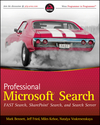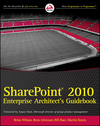Great session at SPC 2009 by Simon Skaria, Lead of Customer Advisory team, Microsoft.
In short, this session was oriented around 3 main topics:
- Flexible deployments
- IT Pro productivity
From the flexibility of deployments stand point, Skaria was highlighting the following features of SharePoint 2010, such as:
Installation:
Installations of the Sharepoint is simplified by server preparation feature such as, one click prerequisites install. this alone is a great time saver, isn’t it? it also provides Progress Reports. this is not available in the Sharepoint 2007. this report notifies you of the progress and steps that are happening during the installation and upgrade. you don’t have to stare at the Config Wizard for hours without knowing where you in the process.
Predictable upgrade:
- Pre upgrade checker.
Checks for best practices, configuration and farm setup settings.
- Visual Upgrade
Allows to preview upgraded site in the new UI before flipping the switch
- Resumeable upgrade
Provides an ability to resume upgrades that were previously aborted without the necessity or rerunning the upgrade from the very beginning.
- Parallel DB Upgrades
These feature provides support for read only upgrade, meaning that while the upgrade is running, your farm is still available to end users but in read only mode. Unlike previous version upgrade, this feature provides availability of services during the upgrade it's self.
From the IT Pro productivity stand point….
LEARN POWERSHELL! Powershell, as the name implies is powerful scripting language that will make your IT Pro life easier. It does not mean that stsadm is going away, it’s not, but ….
Consider the following, 500 OOTB commands are available in 2010… and you can extend these to suit your needs and your deployments
- Logging, monitoring, and alerts.
- Unified logging
Gathers info from all kinds of counters from servers in the farm, including SQL.
Logging info is pushed to open schema SQL DB, use it the way you want.
- OOTB reports
- Rich Web analytics
Beyond just troubleshooting, rich web analytics provide detailed usage reports, reports on slowest pages load where you can trace the root of the performance degradation with details on these pages through the developer dashboard.
- Developer Dashboards
Developer dashboards provide call stack, operations, queries, web part events offsets information(analysis of load time for each individual webpart)
Integrated Health analyzer
This provides the info that SP best practices analysis tool provides with SP 2009… and some more :-). This built in tool analyses security, storage, orphaned items in content DBs, etc.
Business continuity management
- High availability servicing
- No down time on servicing SharePoint
- Lights out recovery
- Fail over is managed by the SharePoint
Scalable Infrastructure
- hosting
- Supports multi tenancy
- SP online standard
- SP online dedicated
- On premises deployments
- Services “a la carte”
Lists are highly scalable!
Support for blob storage
Large document libraries
- Support for more than 1 million documents in one library.
- Performance on large lists and document libraries - is a promise with sub-second response time
- OOT library view comes with the flexible navigation, filtering and refining views by metadata, taxonomy, other defined filters on the fly
- Automatic routing of documents to a drop off library with rules on automatic creation of folders
- Content organizer rules, that allow to create manageable IA
- Easy configuration of library navigators
- Automatic column indexing for lists (where IT pros do not have to worry about the technical side of the set up of lists) instead they can just concentrate on the end user experience
Security and governance
- support for automation of password changes management
- Addition of servers in the farm can be secured by pass phrase
- 7.3 APIs for permissions reporting
- APIs are very rich to provide great starting point for custom reports on security and governance
Information governance
- ediscovery – records management
- search for documents that are subject for records center, preview search results, and without moving them in to records center apply a “hold” on them. The docs are remaining in their original location but become records.
Application governance
- Control over consumption of resources and ability to terminate processes that are running over the limit
IT governance
- block and track sharepoint processes – very useful for sandbox solutions
- AD recognizes Sharepoint machines within environment
- Enabling automatic password change from the Sharepoint
- Apply AD group policy to prohibit implementation of SharePoint servers other than SPs existing in your Farm.
Enjoy :-)







No comments:
Post a Comment